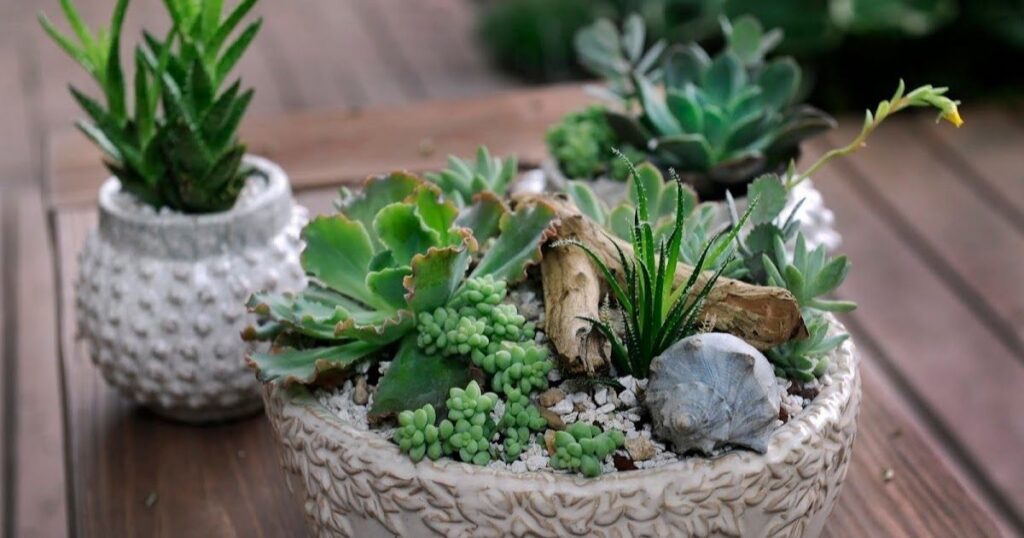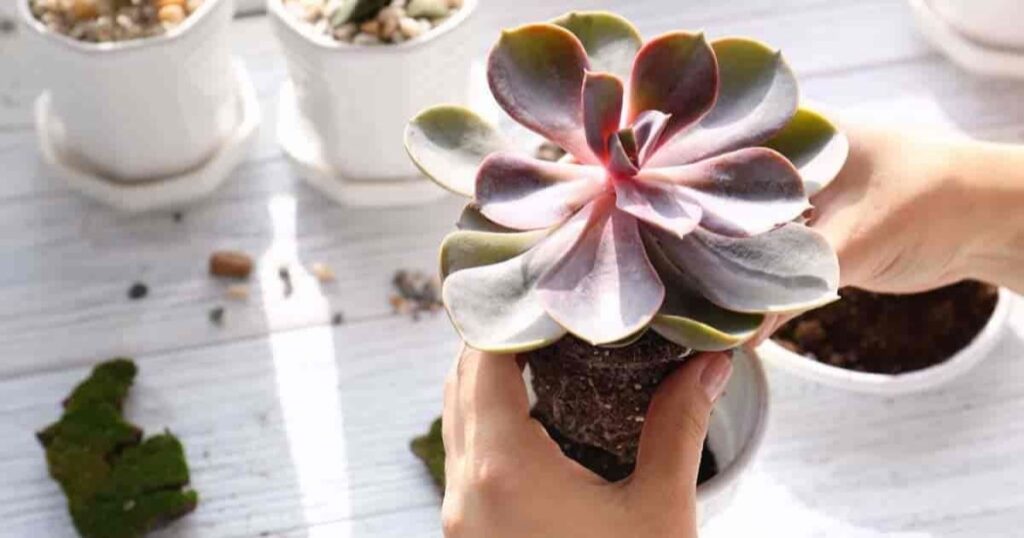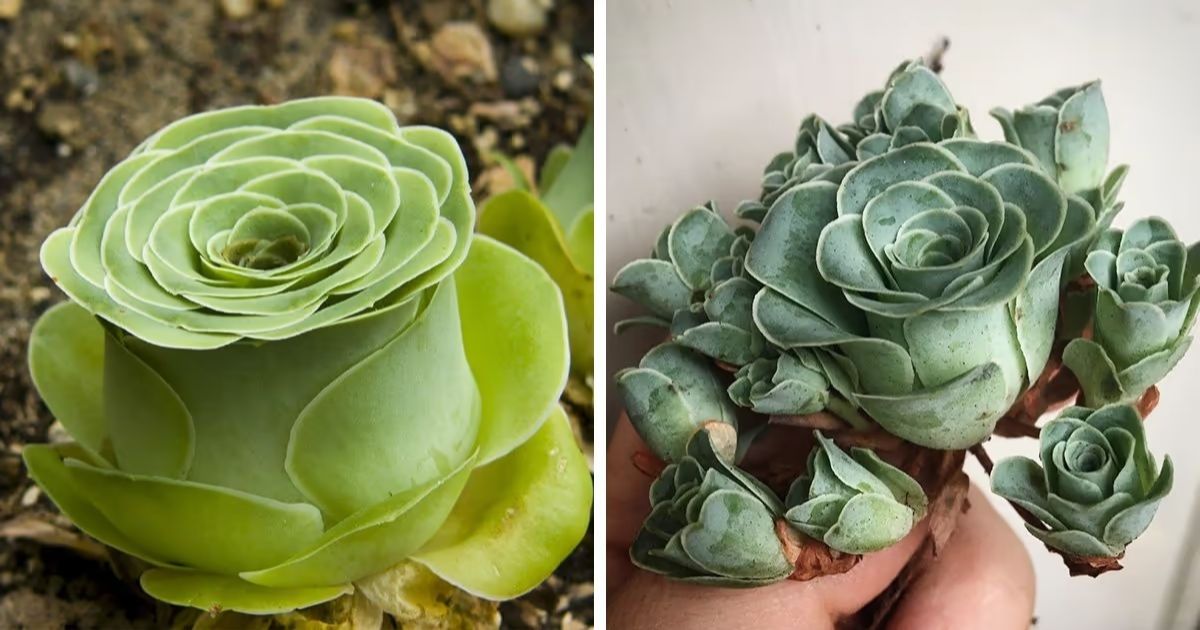Succulents have become increasingly popular among plant enthusiasts due to their unique shapes, low maintenance requirements, and ability to thrive in various environments. However, to ensure these fascinating plants continue to flourish, it’s essential to master the art of replanting succulents. This comprehensive guide will walk you through the process, providing valuable insights into succulent care and helping you avoid common pitfalls.
The Importance of Repotting Succulents
Repotting succulents is a crucial aspect of succulent care that often goes overlooked. While these plants are known for their hardiness, they still benefit greatly from periodic replanting. Let’s explore the key reasons why repotting is essential for the health and longevity of your succulents.
Promoting Healthy Growth
One of the primary reasons for repotting succulents is to promote healthy growth. As succulents grow, they can quickly outgrow their current containers, leading to stunted development and overcrowding. Repotting provides several benefits:
- Room for expansion: A larger pot allows the root system to spread out, supporting overall plant growth.
- Improved nutrient uptake: Fresh potting soil provides a new source of essential nutrients for your succulents.
- Enhanced root health: Replanting helps prevent root-bound conditions and promotes better aeration of the root system.
Controlling Pests and Diseases
Repotting offers an excellent opportunity to inspect your succulents for any signs of pests or diseases. During the process, you can:
https://plantingpedia.com/can-i-plant-tulip-bulbs-in-the-spring/Also read this post:This comprehensive guide will explore the possibilities
- Examine the roots closely for any signs of infestation or decay.
- Remove affected parts of the plant to prevent the spread of diseases.
- Start fresh with clean, sterile soil to reduce the risk of pest problems.
Refreshing Depleted Soil
Over time, the soil in your succulent pots can become depleted of nutrients and lose its optimal structure. Repotting allows you to:
- Replace old, compacted soil with fresh, nutrient-rich potting mix.
- Improve drainage by incorporating appropriate soil amendments.
- Adjust the soil pH if necessary to create an ideal growing environment.
Preparing for Replanting: Materials and Preparations

Before you begin the repotting process, gathering and preparing all the necessary materials is essential. This ensures a smooth and successful replanting experience for your succulents.
List of Necessary Materials
To repot your succulents, you’ll need the following items:
- New pots with drainage holes
- High-quality succulent soil mix
- Small trowel or spoon
- Gardening gloves
- Clean, sharp scissors or pruning shears
- Decorative top dressing (optional)
- Drainage material such as pebbles or gravel
Choosing the Right Pot
Selecting the appropriate pot is crucial for the health of your succulents. Consider the following factors:
- Size: Choose a pot that is 1-2 inches larger in diameter than the current one.
- Material: Opt for porous materials like terracotta or ceramic, which allow for better air circulation.
- Drainage: Ensure the pot has adequate drainage holes to prevent water accumulation.
Importance of the Right Soil Mix
Using the correct soil mix is vital for succulent health and growth. A well-draining succulent soil mix should:
- Contains a mixture of organic and inorganic materials.
- Include components like perlite, pumice, or coarse sand for improved drainage.
- Provide essential nutrients while avoiding water retention.
Step-by-Step Guide to Replanting Succulent Plants

Now that you’ve gathered your materials and chosen the right pot and soil, it’s time to begin the replanting process. Follow these steps for successful succulent repotting.
Removing the Succulent from the Old Pot
- Gently loosen the soil around the edges of the pot using a small trowel or your fingers.
- Tilt the pot and carefully slide out the plant, supporting the base of the stem.
- If the plant is stuck, tap the sides of the pot to help loosen it.
Inspecting for Root Rot
Once you’ve removed the succulent from its old pot:
- Examine the roots for any signs of rot or damage.
- Trim away any dead, mushy, or discolored roots using clean, sharp scissors.
- Gently remove excess old soil from the roots, being careful not to damage them.
Filling the New Pot with Soil
Prepare the new pot for your succulent:
- Cover the drainage holes with a small piece of mesh or a coffee filter to prevent soil from escaping.
- Add a layer of drainage material, such as pebbles or gravel, to the bottom of the pot.
- Fill the pot about one-third full with fresh succulent soil mix.
Setting the Succulent in Its New Pot
Now it’s time to place your succulent in its new home:
- Position the plant in the center of the pot, ensuring it sits at the same depth as in its previous container.
- Add more soil around the roots, gently pressing it down to eliminate air pockets.
- Leave about half an inch of space between the soil surface and the pot rim for watering.
When to Start Replanting Succulents

Knowing when to repot your succulents is just as important as knowing how to do it. Timing can significantly impact the success of the replanting process.
Identifying the Right Time for Replanting
Generally, the best time to repot succulents is:
- During the growing season, typically spring or early summer.
- When the plant has outgrown its current pot.
- If you notice signs of declining health or slow growth.
Signs That You Need to Repot Succulents
Watch for these indicators that your succulent needs repotting:
- Roots grow out of drainage holes or above the soil surface.
- The plant becomes top-heavy or unstable in its pot.
- Soil dries out very quickly after watering.
- Visible salt buildup on the soil surface or pot edges.
Common Mistakes to Avoid When Replanting Succulents
Even experienced gardeners can make mistakes when repotting succulents. Being aware of these common pitfalls can help ensure a successful replanting process.
Overwatering or Underwatering After Replanting
Proper watering is crucial after repotting:
- Wait a few days before watering to allow any damaged roots to heal.
- When you do water, thoroughly soak the soil but allow it to dry completely between waterings.
- Avoid misting or light watering, as this can lead to shallow root growth.
Using the Wrong Soil Mix
The right soil mix is essential for succulent health:
- Avoid using regular potting soil, which retains too much moisture.
- Don’t use soil mixes without proper drainage materials like perlite or pumice.
- Ensure the soil mix provides adequate nutrients without being too rich.
Replanting at the Wrong Time
Timing can affect the success of your repotting efforts:
- Avoid repotting during the plant’s dormant season, typically winter.
- Don’t report immediately after purchasing a new succulent; allow it to acclimate first.
- Refrain from repotting when the plant is flowering, as this can stress the succulent.
Takeaway: Embrace the Joy of Replanting Succulents
Mastering the art of replanting succulents is a rewarding experience that can greatly enhance your succulent care routine. By following this comprehensive guide, you’ll be well-equipped to provide your succulents with the best possible growing conditions.
Remember that each repotting session is an opportunity to:
- Assess your plant’s health and address any issues.
- Provide a growth boost through fresh soil and improved conditions.
- Experiment with new pot designs or arrangements.
To further develop your skills and knowledge, consider joining planting classes or workshops focused on succulent care. These can provide hands-on experience and valuable insights from experts in the field.
Lastly, don’t be afraid to experiment and learn from each repotting experience. With time and practice, you’ll develop a keen eye for your succulents’ needs and become adept at providing them with the care they require to thrive.
By embracing the process of replanting succulents, you’re not just maintaining your plants – you’re nurturing a living art form that will bring joy and beauty to your space for years to come. Happy repotting!
FAQs
What is the best way to transplant succulents?
The best way to transplant succulents is to gently remove them from their current pot, carefully clean off excess soil from the roots, and replant them in a well-draining succulent soil mix in a slightly larger pot with drainage holes. It’s important to handle the plant delicately, especially the roots, and to wait a few days after repotting before watering to allow any damaged roots to heal.
How do you replant succulents without killing them?
To replant succulents without killing them, ensure you use a well-draining soil mix specifically designed for succulents and choose a pot with adequate drainage holes. Handle the plant gently, avoid overwatering after repotting, and place the newly potted succulent in an area with appropriate light conditions for its species.
Should I water succulents after repotting?
It’s best to wait a few days before watering succulents after repotting to allow any damaged roots to heal and prevent potential rot. When you do water, thoroughly soak the soil but then allow it to dry out completely before watering again to mimic the succulent’s natural environment.
Can I cut my succulent and replant it?
Yes, many succulents can be propagated by cutting and replanting. To do this, use clean, sharp scissors to cut a healthy leaf or stem, let the cut end callus over for a few days, then plant it in well-draining succulent soil and keep it lightly moist until roots develop.











